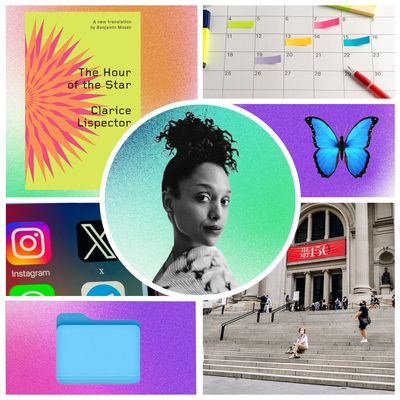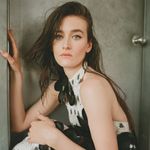
“Memes are not neutral,” writes Legacy Russell in her new book, Black Meme: A History of the Images That Make Us. Russell — a 2023 Center for Curatorial Leadership fellow — is currently chief curator at the Kitchen, a leading experimental and avant-garde art institution that is based in Chelsea but currently operating in a satellite space in the West Village. Four years ago, she released her first book, Glitch Feminism: A Manifesto, to wide acclaim. Part memoir, part art criticism and theory, it investigated the liberatory properties of glitching or malfunctioning and disrupting static notions of gender and technology. With her new book, Russell offers more poignant analyses of a feature of internet and visual culture: memes.
Black Meme contemplates the broadcast and circulation of Blackness throughout history, from one of the earliest instances of Black intimacy caught onscreen in the 1913 silent film Lime Kiln Field Day to lynching postcards and viral videos of police brutality, Michael Jackson’s Thriller, Paris Is Burning, and the trove of “Black reaction GIFs” that are, thornily, a category on GIF search engines. This book — which is dedicated to figures like Saartjie Baartman and the unnamed Black jockey in Eadweard Muybridge’s Animal Locomotion (“a GIF before the GIF”) — is a rigorous study and tribute to “the ways in which Black art and Black life bow to one another in a limitless and radical exchange.”
In Black Meme, you write that “Blackness in itself is memetic.” Can you explain what you mean by that?
The framework of the book focuses on how Blackness has transformed and shaped culture by its transmission over time. When we talk about the “Black meme” as a frame, it’s looking at the ways in which Blackness travels between spaces, across geographies, and through the diaspora.
You’re a writer but also a curator. How would you best describe the goals of your work?
I’m the first Black executive director and chief curator of the Kitchen in the organization’s 50-plus years. It’s really important to ask who the alternative space has been held for, and what avant-garde is, how it’s been defined, to the way that Blackness and Black contributions have been very critical to the advancement of the radical avant-garde. Cultural production, through that vein, is something I feel deeply committed to through my own work, research, and interests.
The Kitchen is a very special institution that looks at the ways in which both cultural workers and artists who are holding wildness, radical thought, and alternative missions within their practice can be brought home inside of their work and study collaboration and methodologies. We are asking questions about what it looks like for artists to have a space that allows them to take monumental risks, and to try out different parts of their practice, or perhaps parts of practice that are blurry, intersectional, boundary-defying, and groundbreaking, to grow in their work at critical points across their career. For me, that really is what the work is, and why I’m deeply invested in being a curator in the arts.
Memes are all about repetition. What activity do you think you could do forever without getting bored?
Reading and dancing are the two things that would be top of mind. I listen to all different sorts of music, so I typically just enjoy being out in the world, and when there is music playing, I love dancing. I love dancing at home with my beautiful kid. When I think about this idea of doing anything on repeat, I’m seeing it through the lens of a durational performance to the point of the Kitchen and its focus. Those are the two activities that I hold very near and dear, and of course, writing as a catalyst across both points.
You were born and raised in New York. What is your idea of a perfect New York day from start to finish?
This is perhaps a controversial position, but I really enjoy a New York day that doesn’t have an itinerary. I enjoy wandering, taking time to walk. Stopping off at different locations, poking into different shops, meeting friends, those are things that are all part of whatever that itinerary would look like. There are things that I’ve always enjoyed across different chapters of my life in New York. One of those things is sitting on the steps of the Met when it’s very late at night or early in the morning. It’s quite an amazing experience to sit in a space like that, especially when the weather is warm and the city is really quiet. There are amazing points of New York that are similar to the steps of the Met, areas of the city that are hidden in plain sight because of the fact that we normally engage institutional spaces or destinations across the city in periods of time where they are most busy and/or open to the public.
As a native New Yorker, with my father’s family from Harlem and having grown up downtown, I’ve spent a lot of time inside of different institutions and different spaces like the Kitchen and P.S. 122 — which is now a performance space — and locations like Joe’s Pub and Dixon Place, and Theater for the New City. These locations have been meaningful to me as part of a broader itinerary of New York over time. Certainly, not all in one day, but definitely spaces that I continue to return to.
If you had to pick four favorite artists — essentially a personal Mount Rushmore — which four would you pick?
As a No. 1 rule of being a curator, I never prioritize any one artist over another in terms of my work and practice, so that’s a question that I can’t answer for you because I love every relationship I have with the artists that I work with. Inside of the book, there are amazing works from artists like Lonnie Holley, Kahlil Robert Irving, Lauren Halsey, Diamond Stingily, Frida Orupabo, Elizabeth Catlett, David Hammons, Glenn Ligon, Aria Dean, Cauleen Smith. These are some folks who have been inspiring and influential to me in many different ways, but I never like the exercise of having to pick favorite artists because for those who work with artists, I think that we learn from our relationships with them in a kind of 360 and it’s a really special thing to be able to have the privilege to work closely and intimately with artists over the course of their life and to grow with them.
A lot of people are bemoaning the death of internet culture — there are too few websites to explore, too many paywalls and bots. Which sites are still part of your daily browsing routine? Which websites do you miss?
I have a nostalgia for that era of GeoCities just because there was a period of time in the GeoCities/MySpace era — which is an era that I grew up with — where people were making really amazing and elaborate works of art via their own personalized websites. It was always a really fun thing to mine through people’s archives and the way that they were thinking and processing the world by seeing the things that they were including in those spaces. For me, it’s the texture of the internet that I miss the most. The ways in which some of that was subject to a certain type of decay. You would see websites break down after a time, but I think that it’s always a great moment to think about what the aesthetics of that period of time were.
Now, I spend far too much time reading the news and thinking about the way in which images are used and circulated digitally via newscast and broadcast, and where those things intersect with our history. I spend a lot of time on Instagram, I spend a lot of time on X — less so now because I think that aspects of that space have changed so radically that I prefer to redirect my attention to other places, people, and things. I also keep many different Dropbox folders of screenshots of things that I see on the internet and screengrabs that have grown over time. I have quite an incredible archive of material from many, many points of the internet. I don’t think that there’s a single site that I go to every single day, but I spend a lot of time as I see things capturing those things and putting them into different folders because I come back to them as I write about internet culture, visual culture, and art history. Those are things that can be drawn and cross-pollinated across many different places.
When would you say you first started archiving websites like that? Did it come from a fear of those no longer existing anymore?
No, I think that in grad school and college, you read things and you want to return to them via JSTOR articles or scans of various reading lists, and these are things that then become part of a practice of just growing in your research over time. In terms of the permanence of the digital, things are constantly changing. I don’t necessarily feel an anxiety about those things disappearing. I think that that may be part of the nature of what digital space does; it mutates and changes and transforms over time. I keep things and I screenshot them and have them categorized based on the theme or focus because often things that are not perceived as art objects are artfully presented and shared, memes and otherwise, that are meaningful to how we read culture. It’s become a discrete exercise that I have enacted over many, many years of work and life.
As a curator, you organize a space and how objects are displayed within it. What is your favorite organizational tool or principle?
I don’t think I necessarily have a blanket approach to how I approach projects. Number one, as a guiding principle, is that I am engaged in collaboration with the artists that I’m working with, and we shape what a vision can look like together. Spaces change; you can have the same room presented in a thousand different ways, and that really is what exhibition-making is, and also what performance does. It transforms the site as a location as well as a site of imagination. My hope is for every project that I take on that I can grow in that vision and think about the ways in which aspects of things can be reorganized and as well, let go. Sometimes certain principles, ways of working, methods, and being, actually may not apply based on what the project requires, and it’s really important to be flexible there.
In terms of just the way that I like to work, I am a very organized person and I wake up super early and I go to bed super late. My days are very long, so my day requires a lot of calendaring and a lot of color-coding. When I work on a project, if there is a timeline involved, that timeline has to be super clear and super precise to keep things moving forward.
So you like calendars and color-coding. Obviously, you’re a mom; that requires organization. Do you use highlighters? Are you someone who uses Post-its?
I do use highlighters. I use Post-its, exactly. This is a strange question; I’ve never been asked something like this before. But I do use color-coding and calendars and highlighters. I’m a very visual person, so those things certainly help me.
What is your most-used emoji?
I think I use the blue butterfly a lot.
What does it mean when you use it?
The circumstance around it is often something that may be specific to an idea of transcendence or of levity, of looking upward. I will often use that emoji in a period of time when someone is interacting with me and there’s a break or a reprieve or a pause, maybe I’ll put the blue butterfly there instead of leaving it blank.
If you could only read one book for the rest of your life, which would it be?
Clarice Lispector’s Hour of the Star is a really amazing one. It’s a really gorgeous story about a girl who is going through some life changes and the way that those things manifest. It’s a very beautiful short story. There’s a great book by a writer named Elizabeth Smart called By Grand Central Station I Sat Down and Wept. That’s a really beautiful book, really gorgeously written for those who are looking to think about what it means to be in love and relationships. Also, John Berger’s To the Wedding is a really important book that is kind of unsung. People often refer to Berger as a theorist of visual culture, but, of course, he wrote lots of things, fiction being one of them. James Baldwin’s Giovanni’s Room is another. If that was my reading list, that would be a good place to start.
This interview has been edited and condensed for clarity.




